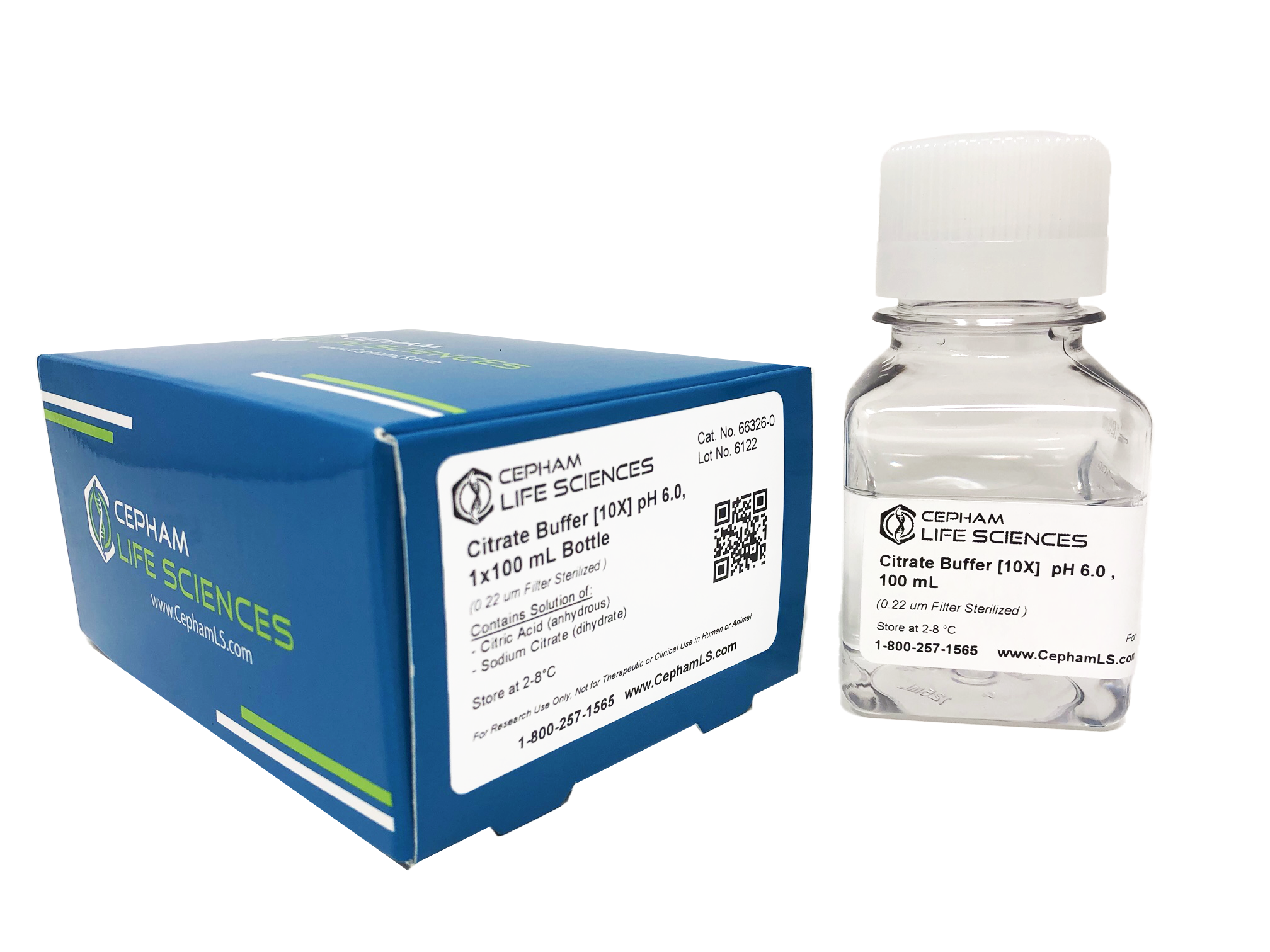Fixatives such as formalin or other such aldehyde-based agents readily activate intrinsic protein crosslinking responsible for masking the cellular, membrane and nuclear antigenic sites in tissue samples that lead to a weak or suppressed signal/stain during immuno-histochemical analysis. Citrate buffers are commonly incorporated in antigen detection by breaking the protein crosslinks between antigens and substances in the fixation medium and thereby revealing the antigens/epitopes in formalin-fixed and paraffin embedded tissue sections, in turn enhancing the staining intensity of antibodies. These buffers are also routinely used for RNA isolation, primarily due to their ability to prevent base hydrolysis.
Sodium Citrate buffer is utilized as a heat-induced antigen retriever for formalin-fixed paraffin-embedded (FFPE) tissue sections prior to incubation with antibodies or DNA fluorescent in situ hybridization. The use of Sodium Citrate buffer, pH 6.0 on such tissue sections greatly enhances the accessibility of antibodies to tissue antigens, thus improving the resulting detection signal.
Applications:
• Antigen unmasking during immunohistochemistry and other imaging procedures
• Used in acid phosphatase reactions in conjunction with p-nitrophenyl phosphate (pNPP) enzyme substrate
• Enhances staining intensity without contributing to the non-specific background signal in immunofluorescence









